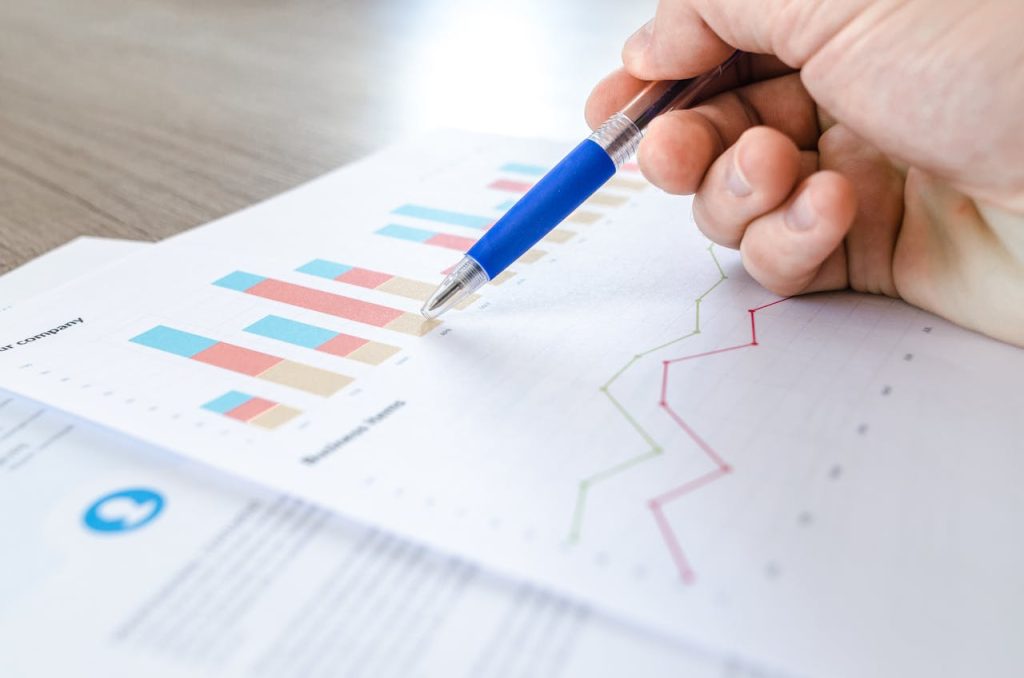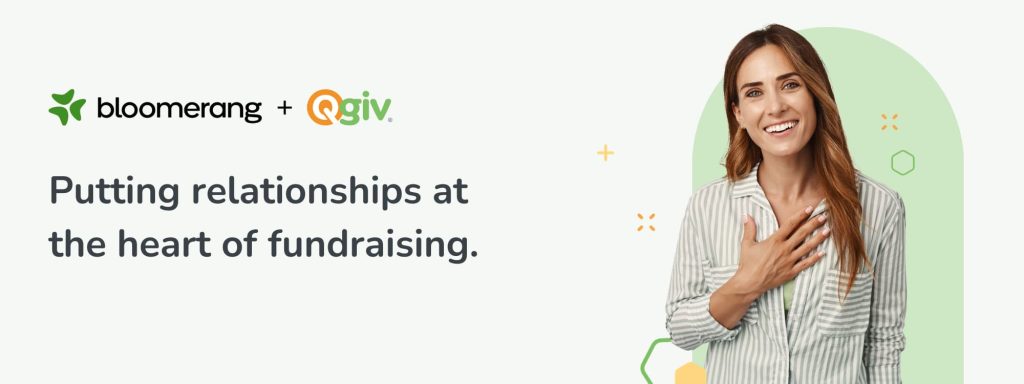Knowing your donors is essential to more effective fundraising! And at the heart of successful fundraising lies one key element—data. Managing your fundraising data can help engage your donors, reach your goals, and maximize your organization’s impact. But where do you start?
Learn more about the ins and outs of fundraising data management with practical tips and strategies to optimize your efforts:
- What is fundraising data or database management?
- What problems does fundraising data management solve?
- How do I start using fundraising data?
- Tools and tech for fundraising data management
What is fundraising data management?
Fundraising data management is the process of collecting, organizing, analyzing, and using data to enhance your fundraising efforts. This includes donor information, donation history, engagement metrics, and other data you collect across various platforms. Effective data management can help you understand your donors better, streamline your processes, and enhance your fundraising strategies, helping you boost your efficiency and build stronger relationships with your supporters.
What data should you collect?
Building a comprehensive database for your donors allows you to create a holistic view of your donors. By collecting the right data, you can foster stronger relationships, enhance donor retention, and ultimately increase the effectiveness of your fundraising campaigns.
Donor information
Basic donor information includes details such as your donor’s full name, contact information, and demographics like age, gender, and occupation. Knowing who your donors are can help you create personalized interactions.
Donation history
Keeping detailed records of past donations is essential. This should include the amounts donated, the dates of donations, and the specific campaigns or events to which they contributed. Analyzing donation patterns can help identify loyal donors and predict future giving behavior, as well as help you segment your donors for more effective communication.
Engagement metrics
Tracking how your donors engage with your organization can help you understand their commitment and interests. This includes monitoring event attendance, email open rates, click-through rates on newsletters, social media interactions, and participation in volunteer activities. High engagement levels can indicate potential major donors or advocates for your cause.
Preferences and interests
It’s important to understand what causes and activities resonate most with your donors. Collect data on their preferred communication channels, favorite types of events, and specific projects of interest within your organization’s mission. This information can help tailor your outreach efforts and make your appeals more relevant and compelling.
Types of data
Understanding the types of data you can collect and how they contribute to your fundraising efforts is vital. Each type of data provides unique insights that can help shape your fundraising strategies and improve donor engagement.
Here are the main categories of data for your donors and their significance:
- Demographic data. This includes information such as age, gender, location, and income level and helps you understand the basic characteristics of your donors and tailor your communication to better fit their preferences.
- Behavioral data. This covers donation frequency, event participation, and volunteering activities to identify patterns and predict future actions based on past behavior.
- Psychographic data. Interests, values, and lifestyle choices provide deeper insights into your donors’ motivations and preferences for more personalized fundraising appeals.
- Transactional data. This includes donation amounts, payment methods, and recurring gifts that can help you understand donor capacity and identify trends in giving.
How to organize fundraising data
Organizing your fundraising data is essential for easy access and analysis. Here are three key steps to follow to help get you started:
- Centralize your data. Use a centralized database or CRM system to store all your fundraising data in one place. This ensures that all team members have access to the same information and reduces confusion while improving collaboration.
- Categorize and tag data. Create categories and tags for different types of data to make it easier to search and filter information. Categorizing your fundraising data can help you quickly locate specific information and conduct segmented analyses.
- Regularly update records. Ensure your data is up-to-date by regularly reviewing and updating donor information. Accurate data is the key for effective analysis and decision-making.

What problems can fundraising data management solve?
Fundraising data management can help your organization address several common challenges that nonprofits face, such as fragmented data, inefficient processes, and inaccurate reporting. By collecting and maintaining your data in one place, you can automate data entry while ensuring data collected from different platforms is updated and unified into donor profiles. By solving these problems, you can focus more on your mission and less on administrative tasks.
Benefits of fundraising data management
The benefits of effective fundraising data management are plentiful. Here are a few key benefits:
- Better donor experience and retention. A well-managed database enables you to provide a better donor experience. By understanding your donors’ preferences and behavior, you can tailor your communications and engagement strategies to meet your donors where they are. This personalized approach can both enhance donor satisfaction and boost retention rates.
- Higher accuracy for analyses and forecasting. Data-driven decision-making is essential in the nonprofit world. With accurate data, you can perform detailed analyses and make informed predictions based on trends in your donors’ behavior to forecast future fundraising outcomes for more effective campaigns.
- Improved data security. Data security is a top priority because your organization handles sensitive donor information. With a fundraising data management system, you can implement robust data security measures that ensure that your donors’ information is protected from breaches and unauthorized access.
- Refined nonprofit outreach efforts. With effective fundraising data management, you can segment your donor base and create targeted campaigns that resonate with specific groups. This personalized approach increases the likelihood of engagement and support. Additionally, data insights help you identify potential new donors and expand your reach.
- Improved fundraising efficiency. With a well-managed database, you can automate processes, streamline workflows, and reduce the time spent on administrative tasks. This allows your team to focus on high-impact activities that drive results.
How to start using fundraising data
Ready to harness the power of fundraising data? Here are some steps to get started:
Create a standard policy for data management
Establishing a standard policy for data management ensures consistency and accuracy across your organization. Define clear guidelines for data collection, storage, and usage for your team to ensure everyone follows the same system. Regular audits can help you maintain your data and identify any gaps in your data management process.
Establish what data you want to collect
Determine the types of data that are most valuable to your organization. Focus on collecting information that will help you understand your donors and improve your fundraising efforts. Data points you should consider include: donor contact information, donation history, communication preferences, and engagement metrics.
Choose the right software
Selecting the right software is key for effective fundraising data management. Search for a CRM system or fundraising software that meets your organization’s needs. Look for software that is easy to use, has effective features, and can fit in your budget. It may also help to find software that integrates seamlessly with other platforms you use, such as email marketing or event management tools.
Clean your database annually
Regularly cleaning your database ensures that your data remains accurate and updated. Remove duplicate records, update outdated information, and correct any errors for cleaner donor profiles. An annual data cleanup helps you maintain the integrity of your database, saves you time and resources in the long run, and improves the effectiveness of your fundraising campaigns.
Keep data updated
Ensure that your data is always current by regularly updating records. You can encourage your donors to update their information through your website or during transactions and use automated tools to capture changes in real-time. Keeping data updated is essential for accurate analysis and reporting, which in turn supports more strategic decision-making for future fundraising campaigns.
Segment donor data
Segmenting your donor data allows you to target and personalize communication for better engagement. Group your donors based on factors such as giving history, preferences, and demographics. Then, you can tailor your messages to each segment for a more effective impact.
LYBUNT (Last Year But Unfortunately Not This) and SYBUNT (Some Year But Unfortunately Not This) are also important metrics for donor segmentation and can help you identify donors who have lapsed to create targeted re-engagement campaigns. Ensure you monitor these metrics regularly to keep your donor base strong and engaged.
Tools and tech for fundraising data management
Investing in a good data management software is essential for organizing and analyzing your fundraising data. The right software can help you maintain a clean and efficient database while enhancing your ability to make informed decisions.
When choosing data management software, look for these key features:
- Data import and export. This feature is crucial for maintaining data consistency across various platforms and for migrating data when necessary.
- Customizable reports. Customizable reporting allows you to focus on key metrics and insights that matter most to your strategy.
- Automation. Automating data entry tasks can help you save time and improve efficiency.
When looking at cost, fundraising data management software comes with various pricing options, so it’s important to assess the specific requirements of your organization to avoid overpaying for unnecessary functionalities. Many software options offer tiered pricing based on the size and needs of your nonprofit, and some even offer free tiers for smaller organizations!
Fundraising software
Fundraising software is designed to help you manage your campaigns, track donations, and engage with donors. But the right fundraising software can also provide insights into donor behavior and campaign performance to help you refine your strategies over time.
When selecting fundraising software, prioritize data features such as:
- Donor tracking. This feature helps you understand donor preferences, tailor your communication strategies, and build long-term relationships by helping you recognize previous donor contributions.
- Campaign management. Comprehensive campaign management tools enable you to set goals, monitor progress, and measure outcomes to help you ensure your campaigns are as effective as possible.
- Integration. Seamless integration with other systems like CRM, email marketing platforms, and accounting software enhances operational efficiency and provides a holistic view of your fundraising activities.
Other helpful tools
In addition to data and fundraising software, consider using the following tools to enhance your fundraising data management:
- Communication tools. Communication is key to engaging your donors and maintaining strong relationships. Email marketing platforms, social media management tools, and other communication tools can help you collect data and keep track of donor information and interactions.
- Accounting tools. Accurate financial management is essential for nonprofits to maintain transparency and accountability. Accounting software can help you track donations, manage expenses, and generate financial reports.

How Qgiv & Bloomerang Can Help
Qgiv and Bloomerang’s all-in-one giving platform offers a comprehensive fundraising and data management solution that can help support your organization’s needs. This unified platform can help you attract new donors, build meaningful relationships, and level up your fundraising results!
Key features include:
- Donor tracking
- Campaign management
- Reporting
- Online donation forms
- Data analytics and insights
- Data segmentation
- Interactive dashboards
- Software integrations
- And more!
Final Thoughts
Effective fundraising data management is a game-changer for nonprofits. By collecting, organizing, and analyzing data, you can enhance your fundraising efforts, build stronger donor relationships, and achieve greater impact! With a good fundraising data management system, you can use data to change the world!
Additional resources
Here are some additional resources to help you improve your fundraising data management system:
- 4 Ways to Use Your Fundraising Data to Raise More. Check out these 4 ways you can use your fundraising data!
- Database 101: How to Improve Your Nonprofit Donor Database for Fundraising Success. Use this guide to improve your donor database.
- 3 Ways Data Will Help You Run a Dynamite Fundraising Campaign. Learn how data can help you fundraise more effectively!





